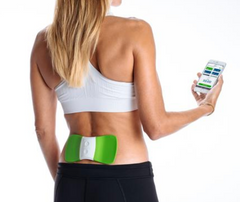Pain is sometimes called an invisible illness. It is not an actual disease, yet it triggers widespread functional issues as if it were one. People in pain participate in life like everybody else. They typically do not talk about their pain much, and often hide it quite well.
September was Pain Awareness month in the USA. The goal of the month is to make pain less invisible. So how aware are we of the problem of pain? Take the following little quiz and see how you do:
How many adult Americans have daily chronic or severe pain?
10 Million
20 Million
35 Million
50 Million
If you guessed 50M, you are right. According to a 2012 study (1) by the National Institutes of Health 25M adults have chronic daily pain and another 24M have severe pain. That is over 10% of the population! When you go about your day today, look around you; 1 out of 10 people you see is probably hurting badly right now.
Try this one:
Out of these millions of people in the most severe kind of pain, how many of them rated their health good or better?
Less than 10%
10-30%
30-50%
More than 50%
The answer: More than 50%. These people are not staying at home because of pain. They don’t feel sick, but they hurt somewhere.
Pain Management
Many different things can be done to try to reduce the pain, some more effective than others. There are of course pain pills but they have side effects. There are all kinds of exercise programs, healthy eating habits, postural techniques, etc.
All of these are good and useful if they achieve the following outcomes: pain is reduced, the patient can move around easier and participation in normal daily activities is better than before.
A drug that is very effective at taking away the pain temporarily but also makes you drowsy so you can’t concentrate or drive while taking it is therefore not an ideal solution.
TENS to manage Pain
Fortunately there is a very effective tool to reduce the amount of pain without any of the side effects associated with drugs – TENS Therapy. Transcutaneous Electrical Nerve Stimulation is a very simple, safe and non-invasive technique where surface electrodes deliver small electrical pulses to your skin. When using specific frequencies and intensities, the sensation will mask the pain and also stimulates your body to produce its own pain-relieving drug. See this post for some more information.
WiTouchPRO
 Using TENS has now become much easier thanks to a cool new technology developed by Hollywog. The company set out to remove some of the hassle involved in using TENS – dealing with electrodes and lead wires, increasing intensity, adjusting settings, etc.
Using TENS has now become much easier thanks to a cool new technology developed by Hollywog. The company set out to remove some of the hassle involved in using TENS – dealing with electrodes and lead wires, increasing intensity, adjusting settings, etc.
The result is the new WiTouchPRO. It’s very easy to use. Just turn it on, stick it on the skin where it hurts and increase the intensity until you feel a comfortably strong sensation. The device is controlled by an app loaded on your smartphone. This app also collects statistics on how much and how strongly you use the device. This info is often helpful for your therapist or doctor.
This breakthrough solution meets all the criteria of a successful way to manage your pain: it decreases your pain, it’s easy to wear while working or playing around, and it comes with no problematic side effects. Life has just become a whole lot better!
References
1. Nahin, R. L. (2015). Estimates of pain prevalence and severity in adults: United States, 2012. The Journal of Pain, 16(8), 769-780.
Yorick Wijting, PT, DPT (www.specialistpt.com) received his degree in Physical Therapy in the Netherlands and later his DPT at the University of St. Augustine in Florida. He has practiced physical therapy in various care settings across Europe, South Africa and the United States. He has extensive training and practical experience in electrotherapy and teaches nationally and internationally to medical professionals on its therapeutic use. He is passionate about helping clinicians discover how technology can enhance their efficiency and treatment outcomes.

